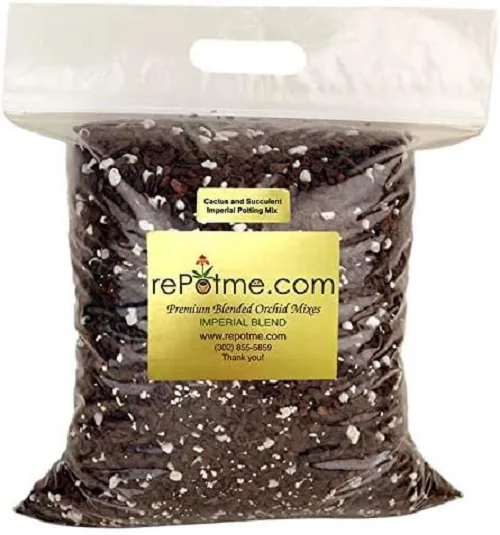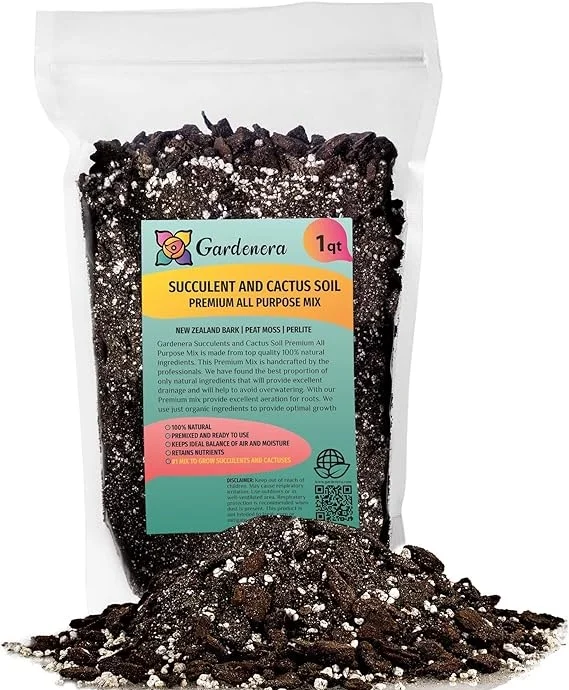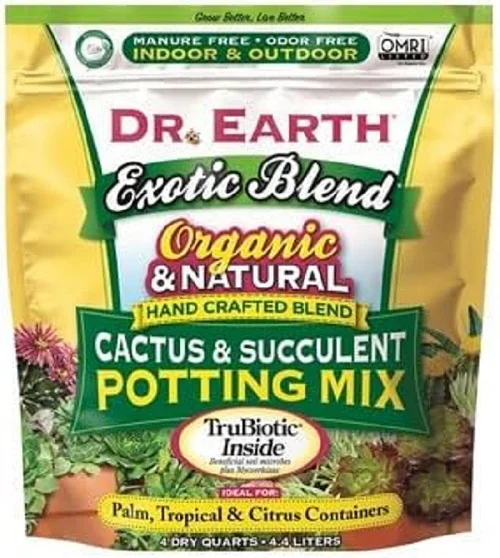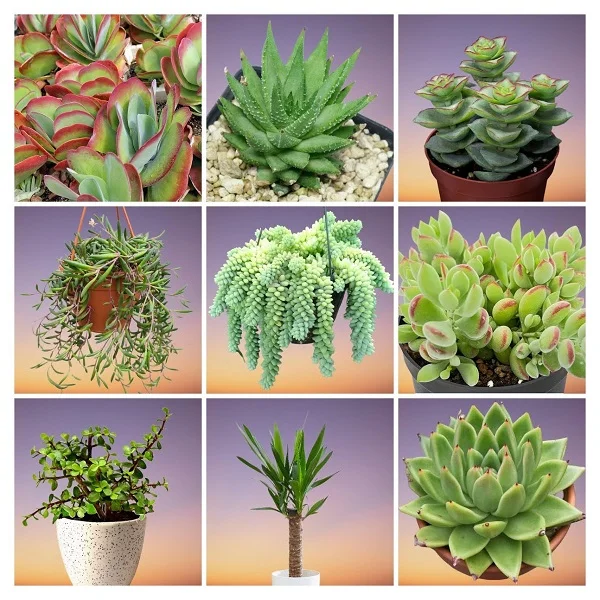Crassula falcata (Propeller Plant) Care Indoors, Propagation, Problems and Remedies
Some links in this post may be affiliate links
Crassula falcata (Propeller Plant) flourishes in bright light with 4-6 hours of direct sunlight, average warmth, moderate humidity and moderately moist, rich, well-drained soil coupled with monthly feeding in the growing season.
Propeller Plant also called Scarlet Paintbrush Plant is among the popular Crassula varieties and bears gray-green, succulent, propeller-shaped leaves and dense clusters of scarlet-red blooms.
Crassula falcata is a single-stemmed plant whose leaves grow around the stem in a slight angle and can grow to a length of 2 feet. The shape and growth pattern of the leaves give this plant the common names, Propeller Plant and Airplane Plant.
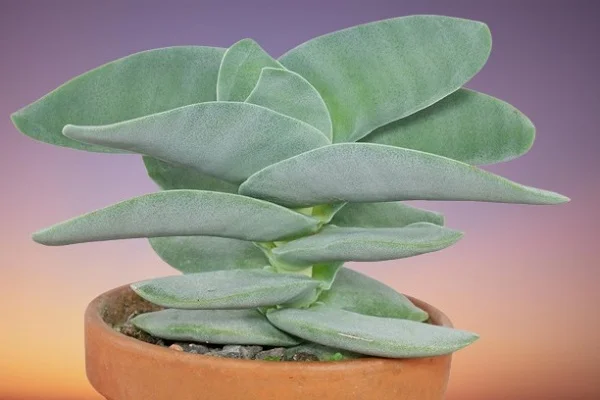
Botanical name: Crassula falcata
Synonmy: Crassula perfoliata var. falcata, Crassula perfoliata var. minor
Family: Crassulaceae
Common names: Propeller Plant, Scarlet Paintbrush Plant, Airplane Plant, Sickle Plant
Origin
Crassula falcata also called Crassula perfoliata var. falcata or Crassula perfoliata var. minor is endemic to the Cape of Good Hope in South Africa.
How big does a Propeller Plant get?
Propeller Plant can grow to a height of 2 feet and a spread of about 1 foot.
Flower
Propeller Plant flowers are small, scarlet-red and occur in dense clusters borne on a long stalk from the center of the plant. It blooms in summer although it is unlikely to flower when grown indoors. The blooms can last over a month.
The flowers are attractive to bees and butterflies and smell like cinnamon. The common name, 'Scarlet Painbrush', is in reference to the dense clusters of scarlet-red flowers.
Is Crassula falcata poisonous?
Yes. Crassula falcata like its cousin, Jade Plant, is considered toxic to both humans and pets as indicated by ASPCA. If ingested it can cause nausea, vomiting and diarrhea. Keep the plant away from the reach of children and pets.
How do you care for Crassula falcata indoors?
To care for Crassula falcata indoors, give it bright light with about 4-6 hours of direct sunlight, average warmth of 15-260C, humidity of 50-55% and moderately moist, rich, well-drained soil coupled with monthly feeding in spring and summer
Propeller Plant care does not need regular repotting as it grows best when pot-bound. Pruning is necessary to keep the plant neat, to discourage pest and disease infestations and to rejuvenate growth. Keep reading for more on these growing conditions and how to achieve them.
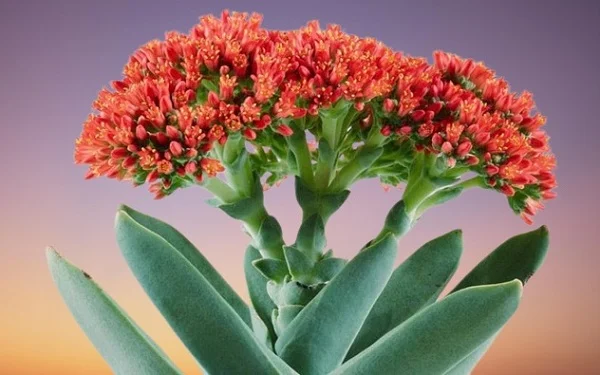
Watering
How often should I water a Propeller Plant?
Water your Propeller Plant liberally in spring and summer while allowing the top half of soil to dry out between waterings. Keep the soil moderately moist and avoid overwatering to prevent rotting, yellowing and shrivelled leaves.
Decrease watering in fall and winter to maintain the soil barely moist as growth is reduced. Do not leave the soil to dry out completely to prevent wilting and drooping leaves.
Use water that is at room temperature to avoid cold shock which can cause stunted growth sudden leaf loss. Ascertain that the water is chlorine-free to prevent browning of leaves; use rain water or filtered water.
Make sure that the pot has a drainage hole and the soil is free-draining to prevent waterlogging which can result in rotting and death of the plant.
Be careful not to wet the foliage to avoid fungal diseases, you may water from the bottom instead.
Light Requirements
Does Crassula falcata like sun or shade?
Crassula falcata likes bright light with at least 4-6 hours of morning or late afternoon sunlight. Keep it away from hot midday sunshine to avoid scorching of the leaves.
If the light is not sufficient, the plant will be leggy with elongated stems, wide spaces between the leaf nodes and small pale leaves. If the natural lighting is not adequate, use a grow light to supplement it.
Regularly rotate the pot to ensure that the plant receives light on all sides for a balanced growth and to prevent lopsided growth.
You can grow the Propeller Plant outdoors, however, gradually acclimate it and place it in a shaded place to prevent scorching the leaves.
Temperature & Humidity
Propeller Plant prefers an average warmth of 15-260C with a minimum of 100C in fall and winter. Keep it away from drafts coming from AC units, heat sources, windy doors and windows as they can cause stunted growth, drooping and brown leaf spots.
Crassula falcata prospers in a humidity of 50-55%. Make sure that there is good air circulation to prevent fungal infestations which are prevalent in damp, poorly aerated conditions.
Fertilizer
Feed Propeller Plant with a cactus and succulents fertilizer monthly in spring and summer for a lush growth. It is not a heavy feeder, therefore, take care not to overfeed.
Stop feeding in fall and winter as growth is minimal at this time and feeding at this time can result in fertilizer burn and death of the plant.
Potting Soil
The best soil for Propeller Plant should be rich in organic matter, loose and free-draining to prevent it from getting soggy. The soil should be loose enough to allow water to drain out fast enough. Cactus and succulents soils are perfect for this plant.
Repotting
When to repot Propeller Plant?
Repot Propeller Plant at the beginning of the growing season (spring to early summer), only when pot-bound as it blooms best when root-bound.
How to repot Propeller Plant?
- Select a pot that is only one size larger than the current one to avoid overpotting as the plant is a slow grower. Make sure the pot has a drainage hole to prevent root-rot.
- Fill the pot halfway with a well-draining soil and moisten it lightly.
- Carefully slip the plant out of its pot, loosen the soil around the roots and cut away any dead roots.
- Position the plant in the center of the pot and continue filling the pot while firming the soil around the root base. Maintain the plant at the same soil level it was in the previous pot.
- Place the potted plant in a warm, well-lit place away from direct sunlight to prevent scorching.
- Wet the soil thoroughly until water drips through the drainage hole.
- Replace the plant to its original position and carry on with routine care.
Go for a clay pot as it is porous and allows the soil to dry out faster. Check out these terracotta pots with saucer on Amazon.
Pruning & Grooming
Pruning Propeller Plant involves removal of any dead or diseased leaves and spent flowers to keep it neat and also discourage pest and disease infestations.
Snip the leaves and the flower stalk at the base with a sterilized knife or pair of scissors to prevent diseases transmission.
Cut back the plant at the beginning of the growing season if it is too straggly to rejuvenate growth.
Minimize the number of cuts as much as possible to avoid unnecessary injuiries to reduce disease infestations.
Clean the leaves regularly by damp-wiping with a soft cloth to get rid of dust and discourage pest infestations. Take care not to damage the fragile leaves.
Crassula falcata Propagation
Propeller Plant is propagated from offsets, leaf cuttings or stem cuttings at the beginning of the growing season when in active growth.
1. Propagating Propeller Plant from offsets
- Carefully seperate the offset from the mother plant by cutting with a clean, sharp knife. Ensure that the offset has adequate roots and some leaves.
- Fill a pot halfway with a well-draining soil and moisten it lightly. Use a pot that has a drainage hole to prevent rotting.
- Position the offset in the center of the pot and continue filling the pot with the soil while firming it around the base of the offset. Take care to maintain it at the same soil level it was in the previous pot.
- Place the pot in a warm, well-lit place away from direct sunlight to prevent scorching.
- Maintain the soil moist through out until the new plant is well established after which you can begin routine care.
2. Propagating Propeller Plant from leaf cuttings
- Take leaf cuttings complete with the petiole from a healthy plant.
- Allow the leaf cutting to dry out (callus) for a few days to prevent rotting.
- Fill a rooting container with well-draining soil and slightly moisten it. Use a container with good drainage.
- Once calloussed, lay the leaf cutting on the moist soil while ensuring that the cut end does not come into contact with the soil to prevent rotting.
- Place the set up in a warm, well-lit place away from direct sunlight.
- Keep the soil moist until a new rosette forms at the base of the leaf cuttings.
- Allow substancial growth of the rosette before transplanting the new plant into individual pots after which routine care can begin.
3. Propagating Propeller Plant from stem cuttings
- Take 3-5 inches stem cuttings from a healthy plant and ensure each has some leaf nodes as this where new growth will sprout from.
- Allow the cutting to dry out (callus) for a few days to prevent rotting.
- Fill small pots with well-draining soil and moisten it slightly. Ensure that the pots have a drainage hole to prevent rotting.
- Once callused, insert 1-2 inches of the lower cut end of the stem cuttings in moist soil.
- Place the set up in a warm, well-lit place away from direct sunlight.
- Maintain the soil moist until the stem cuttings are rooted. Rooting may take upto 4 weeks.
- Allow substancial growth before transplanting the new plant after which routine care can begin.
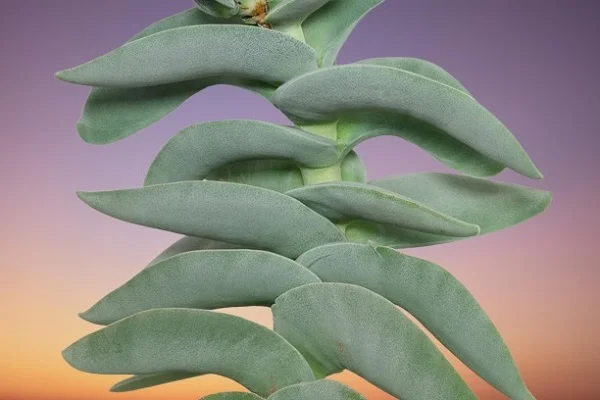
Crassula falcata Problems & Solutions
Propeller Plant problems are leaf drop, leggy growth, pests and diseases among others. Keep reading for more on these problems and how to fix them.
Leaf drop
Leaf drop on Propeller Plant is due to too little light, drafts, inconsistent watering or cold water.
How to fix it
Too little light: Move the plant to a brighter spot or use a grow light if the natural light is not adequate.
Drafts: Keep it away from drafts like AC units, drafty windows, hot air vents, windy doors among others.
Inconsistent watering: Water when the top 2-3 inches of soil feel dry but do not allow the soil to dry out completely. Do not water on a schedule.
Cold water: Use room temperature as too cold water can cause cold shock.
Leggy growth
Leggy growth on Propeller Plant is caused by too little light or underwatering.
How to fix it
Too little light: Position the plant in a brighter spot or instal a grow light if the natural lighting is not enough.
Underwatering: Water when the top 2-3 inches of soil feel dry but do not allow the soil to dry out completely.
Pests
Common pests on Propeller Plant are scale insects, mealybugs and spider mites.
How to fix it
- Isolate the affected plant to prevent spread to the other plants.
- Treat the affected plant with neem oil or insecticidal soap as per the manufacturers' recommendations.
- Regularly check underneath and between the leaves for these pests and carry out timely control measures.
- Maintain the plant well pruned to discourage the pests.
Diseases
Propeller Plant is prone to the following three diseases:
1. Powdery mildew which is prevalent in overwet conditions coupled with poor air circulation.
How to fix it
- Isolate the affected plant to minimize spread to other plants.
- Treat the plant with horticultural oil as instructed by the manufacturer.
- Improve ventilation to ensure free air circulation for the plant.
- Water from the bottom to avoid wetting the foliage to reduce the disease infestation.
- Use a pot with a drainage hole and soil that drains easily to prevent iwaterlogging.
2. Leaf spot disease which is enhanced by poor air circulation coupled with overdamp conditions. It presents as brown, soft leaf spots.
How to fix it
- Isolate the affected plant and treat it with systemic fungicide as per the manufacturer's recommendations.
- Take care not to wet the leaves during watering to minimize the disease infestation; water from the bottom instead.
- Improve air flow for the plant to discourage the disease.
3. Black leg disease which is prevalent in overwet conditions coupled with poor air circulation. The symptoms manifest as oval, sunken, light-brown to black cankers with purple-to-black margins near the base of the stem.
How to fix it
- Isolate the affected plant to minimize spread to other plants.
- Treat the infected plant with neem oil as instructed by the manufacturer.
- Improve ventilation and make sure that there is free air circulation for the plant.
- Always allow the top half of soil to dry out between waterings.
- Empty excess water from the catch plate to prevent the plant from sitting in soggy soil.
- Ensure that the pot has a drainage hole and that the soil is free-draining.
You liked it? Share on social media.
Related Content
Amazon Associates Disclosure
Homeplantsguide.com is a participant in the Amazon Services LLC Associates Program, an affiliate advertising program designed to provide a means for sites to earn advertising fees by advertising and linking to amazon.com.
